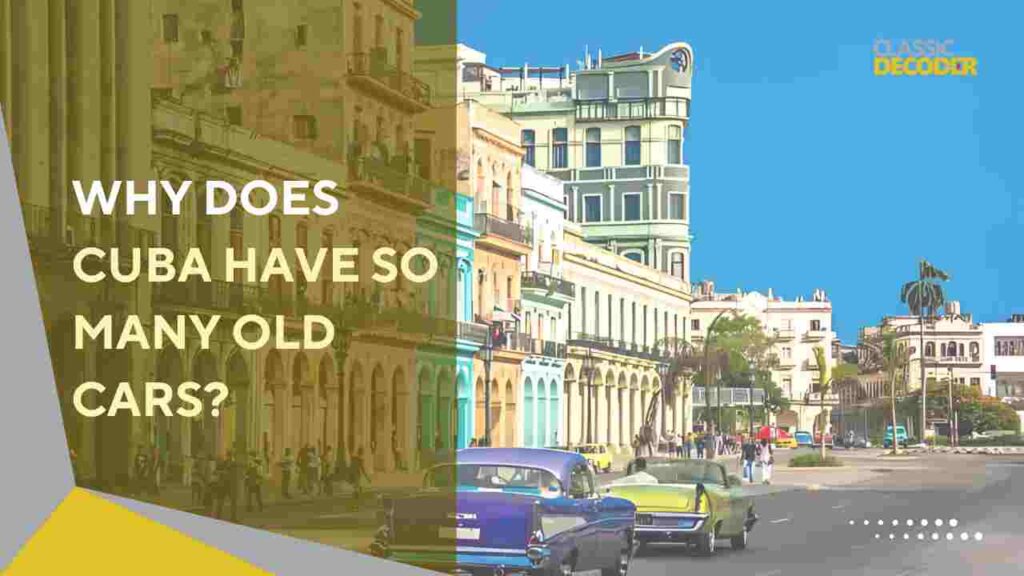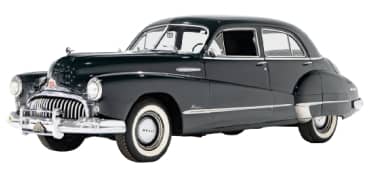It’s no secret that Cuba is famous for its streets lined with classic cars frozen in time. But why, in a world that has moved on to newer models, is Cuba still driving around in old Chevys and Fords? The problem dates back to historical events that restricted access to new cars and parts. This left the Cuban people with a serious challenge: how to keep their old cars running.
Over the years, they’ve developed ingenious ways to maintain these relics. The result? Cuba became a living museum of classic cars, and today, it’s one of the few places where you can see a ‘57 Chevy used as a daily driver. But there’s more to the story—let’s discover how and why this happened.
RELATED: Things to Know if You Want to Use Your Classic Car as a Daily Driver
A History of Cars in Cuba
Cuba was once an automotive paradise. In the 1950s, Havana was buzzing with the latest American cars. Brands like Chevrolet, Ford, and Cadillac dominated the streets. During this era, Cuba imported thousands of vehicles from the United States.
Car enthusiasts flocked to Havana, eager to experience the island’s vibrant car culture. These weren’t just any cars—many were high-end models that symbolized luxury and status.
Everything changed in 1959 when Fidel Castro’s Cuban Revolution overthrew the existing government. The revolution triggered a series of events that would forever alter Cuba’s relationship with the outside world—and with cars.
The 1959 Cuban Revolution and Import Embargo
After Castro came to power, the U.S. placed a strict embargo on Cuba in 1960. This embargo meant no new American cars, parts, or supplies could be shipped to the island. Suddenly, the lifeblood of Cuba’s automotive culture was cut off.
No one could import new cars, and the cars already in Cuba were left to survive without any support. Imagine owning a car that you couldn’t easily get parts for. You’d have to get creative, right? That’s exactly what Cubans did.
They learned to repair and maintain their aging vehicles, often fabricating their parts from whatever they could find. This made Cuba famous for its car ingenuity and made the island a place where old cars were not only valuable but necessary.
RELATED: 10 Best Classic Supercars: The Most Iconic Cars of All Time
The Vintage Car Revival
At first, the embargo created frustration and difficulty. People couldn’t upgrade their cars, and the ones they had began to break down. But after years of adapting, Cubans began to appreciate what they had.
Instead of seeing their old cars as a burden, they began to cherish them. These classic cars became part of Cuban identity. You could say they revived the art of car restoration out of sheer necessity.
In Cuba, owning a classic car isn’t just about nostalgia—it’s about survival. These cars became symbols of resilience and resourcefulness. Cubans weren’t just keeping their cars alive but their culture alive.
As the economy improved in the 1990s, vintage cars became more than just transportation; they became part of Cuba’s tourism appeal. Tourists began flocking to the island for the beaches and music and to ride in these beautifully preserved vehicles. The cars themselves became ambassadors of Cuba’s history and spirit.
Ongoing Use of Cars in Cuba Today
Today, Cuba is still home to thousands of classic cars. Many of them are used as taxis, especially in Havana. These cars, with their glossy paint jobs and rumbling engines, are a major draw for tourists. While some people might expect these old cars to be museum pieces, they’re part of everyday life in Cuba. You’ll see them cruising down the Malecon, the famous seafront boulevard, or parked outside local cafes.
But don’t be fooled by their vintage exteriors. Many of these cars have modern engines or parts from other countries. Since original parts are hard to come by, Cuban mechanics have become experts at making do with what they have. They’ll replace American engines with Russian or European ones, mix and match parts from different models, and even use household items to fix their cars. It’s like car maintenance, which has become an art form in Cuba.
This love for classic cars has also turned into a thriving business. Tourists eagerly pay for rides in these vintage cars, which has helped local owners invest in keeping their cars in good shape. Owning a classic car in Cuba today is not only a point of pride but also a smart business decision.
RELATED: 10 Best Classic Italian Sports Cars: Best Italian Sports Cars of All Time
Conclusion
Cuba’s classic car culture isn’t just a relic of the past—it’s a living, breathing part of the island’s present. The embargo forced Cubans to become masters of car preservation, turning their aging vehicles into valuable treasures. Today, these cars represent much more than just transportation—they are symbols of resilience, innovation, and pride. For anyone who loves vintage cars, visiting Cuba is like stepping into a time machine.
If you’re curious to dig deeper into the history of classic cars or want to learn more about your own vehicle’s origins, we offer valuable tools for classic car VIN decoding. You can access any classic vehicle history report and build sheet by VIN and find out the backstory of any automotive legend. Just like Cuba, classic cars have stories worth preserving!

